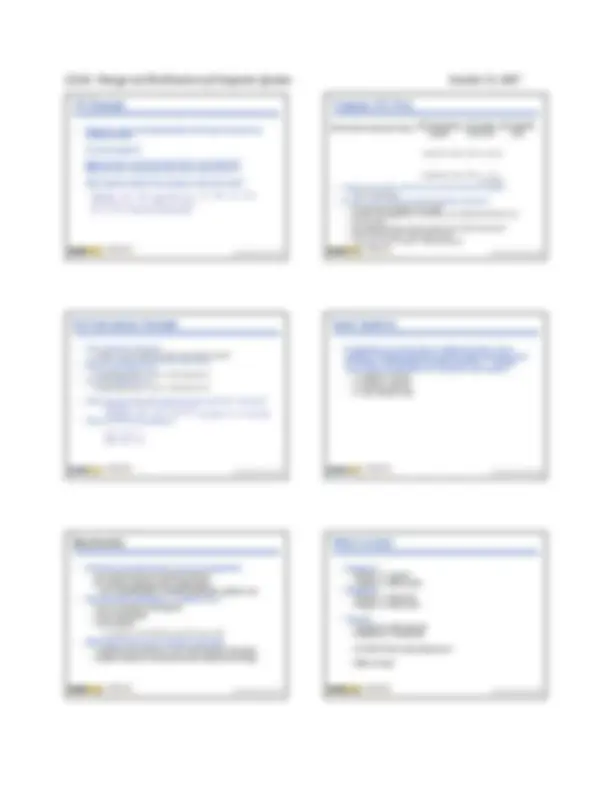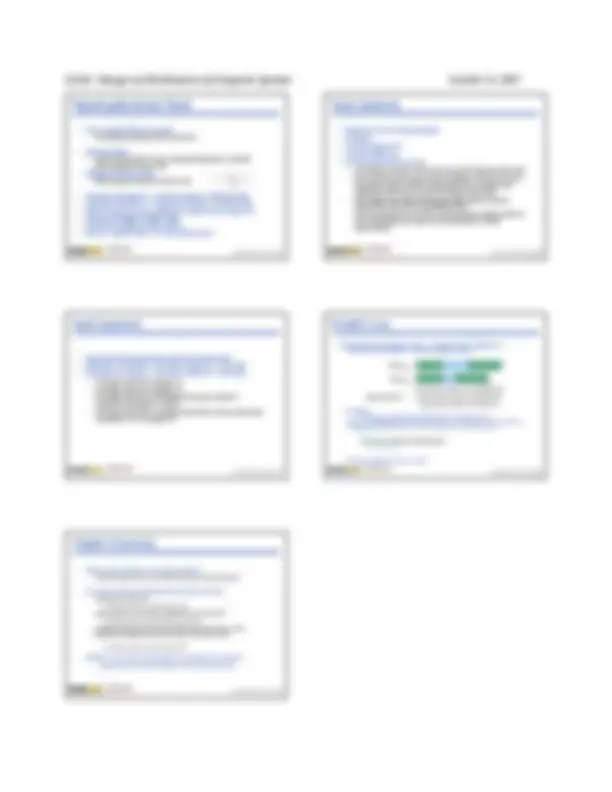




Study with the several resources on Docsity

Earn points by helping other students or get them with a premium plan


Prepare for your exams
Study with the several resources on Docsity

Earn points to download
Earn points by helping other students or get them with a premium plan
Community
Ask the community for help and clear up your study doubts
Discover the best universities in your country according to Docsity users
Free resources
Download our free guides on studying techniques, anxiety management strategies, and thesis advice from Docsity tutors
Material Type: Assignment; Professor: Hsieh; Class: DESIGN & ARCHTCTR OF COMP SYSTMS; Subject: Computer Science; University: University of California-Riverside; Term: Fall 2007;
Typology: Assignments
1 / 4

This page cannot be seen from the preview
Don't miss anything!



SCIENCE & ENGINEERING^ COMPUTER
Administrative Matters
SCIENCE & ENGINEERING^ COMPUTER
Quick correction on homework3 solution
SCIENCE & ENGINEERING^ COMPUTER
SCIENCE & ENGINEERING^ COMPUTER
Pentium bug
Pentium-gate
Pentium-gate
SCIENCE & ENGINEERING^ COMPUTER
Real life questions
SCIENCE & ENGINEERING^ COMPUTER
Chapter Three Summary
SCIENCE & ENGINEERING^ COMPUTER
SCIENCE & ENGINEERING^ COMPUTER
Example
cycle
seconds program
cycles program
seconds = ×
For program A: 10 seconds = CyclesA × 1/ 400MHz For program B: 6 seconds = CyclesB × 1/clock rateB CyclesB = 1.2 CyclesA
Clock rateB = CyclesB/ =1.2 CycleA/
Now that we understand cycles Performance
SCIENCE & ENGINEERING^ COMPUTER
Reporting Benchmark Result
SCIENCE & ENGINEERING^ COMPUTER
Quick Questions
SCIENCE & ENGINEERING^ COMPUTER
Quick Questions
SCIENCE & ENGINEERING^ COMPUTER
Execution Time After Improvement = Execution Time Unaffected +( Execution Time Affected / Amount of Improvement )
Amdahl's Law
TimeBefore
TimeAfter Execution time w/o E (Before)
Execution time w E (After)
Speedup (E) =
SCIENCE & ENGINEERING^ COMPUTER
Chapter 4 Summary